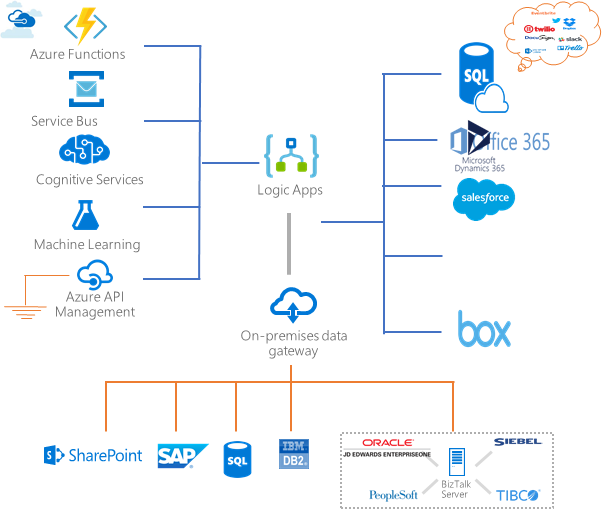

To prevent this from happening and to ensure that all existing logic apps run smoothly and independently, virtual networking in its own integration services environment must be employed.

Because of this, it is possible, although unlikely, that a rogue logic app could impact your entire infrastructure.

On the other hand, if workflows are static or increasing very slowly, the consumption model may be the right choice for your business.Ĭurrent cloud-based logic apps operate in a multi-tenant environment where the same infrastructure deploys and manages all logic apps. If your organization’s workflows are increasing, and the trend is likely to continue, it could result in an unlimited rise in charges and extensive consequences to your business. Until now, the logic apps model has been a consumption or pay-as-you-go model that works very well when using a limited number of workflows however, with this model, as the workflows increase so does the cost. Logic Apps Consumption – When is it the right decision? More time is freed up to refine business logic and develop and test integration features locally prior to deploying. This enables straightforward building of automated business processes and system integration with minimal coding using hundreds of pre-built connectors, all generated in the background by Azure.ĭesign and testing – Azure Logic Apps also includes a new designer with significant improvements. It’s easy to use – Microsoft Azure Portal is an easy-to-use development tool, accessed in your web browser. It is equipped with over 100 different connectors including Salesforce, Office 365, Twitter, Dropbox, and Google services. Independence – Azure Logic Apps offers a single-tenant with all the Azure functions, such as virtual networking.Įxtensive integration ability – Azure Logic Apps can be used to integrate business systems such as: websites, mobile apps, backends, APIs, and processes. With Azure Functions runtime, which is based on Azure App Services, it can run in Azure, on-premises in a container, locally, on a PC, or on someone else’s cloud. Working on a flat monthly fee, it can be quickly turned off and back on as needed or to align to budgetary requirements.įlexibility and scalability – Because Azure Logic Apps is cloud-based and serverless, it automatically scales and adapts as business needs change. Benefits of Logic Apps StandardĬost effectiveness – Azure Logic Apps is a serverless engine with no upfront costs or maintenance charges, making it is one of the most cost-effective integration platforms on the market. Microsoft’s BizTalk Migrator tool helps companies move to the cloud, and the many advantages of Logic Apps Standard makes the move even more inviting. Microsoft’s latest offering in the logic apps technology space, Logic Apps Standard, released in June 2021, may be the incentive to modernize classic on-premises BizTalk Server and make the move to the cloud.
#Logic app switch case upgrade#
BizTalk Support & Azure Managed ServicesĪzure Logic Apps Consumption or Upgrade to Standard? What is the right choice for my business? Is it time to modernize my on-premises BizTalk Server with a move to the Cloud?.Azure Insights & Performance Monitoring.Azure & Workday Integration Developer/Architect.Azure Developer/Architect – Work from Home.


 0 kommentar(er)
0 kommentar(er)
